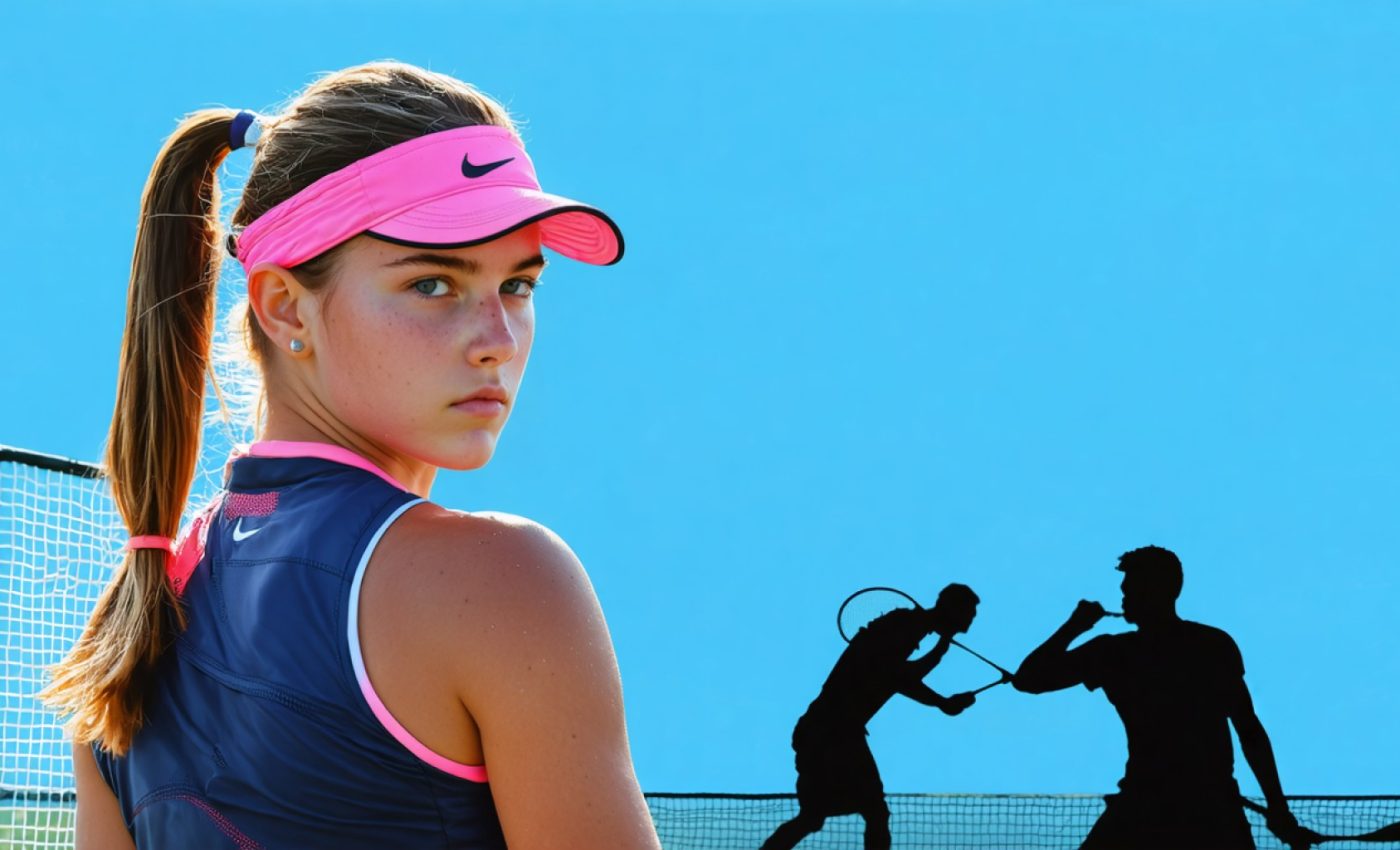- Mirra Andreeva, at just 17, becomes the youngest WTA 1000 champion
- Andreeva defeated Clara Tauson in the Dubai final, showcasing resilience and skill
- Jack Draper, age 23, demonstrates tenacity with a comeback in Doha against Andrey Rublev
- Andreeva’s and Draper’s performances highlight the importance of youth and perseverance in tennis
- Both athletes exemplify how brilliance emerges under pressure, redefining success in the sport
Under the blazing Dubai sun, a new star solidified her status on the world stage. Mirra Andreeva, just 17, etched her name into tennis history as the youngest WTA 1000 champion. Faced with the formidable Clara Tauson, Andreeva showcased poise far beyond her years. The match crackled with intensity early on, but it was Andreeva’s resilience that shone through as she snatched the first set in a gripping tiebreak, 7-6(1). With that victory, she soared through the second set, 6-1, leaving an indelible mark with each blazing forehand. Her triumph serves as a beacon of hope and inspiration for aspiring athletes worldwide, proving that youth and tenacity can conquer the grandest of stages.
Meanwhile, in the bustling city of Doha, Jack Draper stirs the crowd with his relentless determination. At 23, Draper embodies the spirit of a fighter, as evidenced by his dramatic comeback in Doha. After losing a tightly contested first set to Andrey Rublev, Draper, with steely resolve, clawed his way back to win the second set, 7-5. As the players enter the decisive third set, the tension is palpable, epitomizing sport’s unpredictability and endless potential for redemption.
These stories underscore a key message: In sports, as in life, brilliance and perseverance bloom under pressure. Andreeva’s commanding victory and Draper’s ongoing duel in Doha remind us that the future of tennis isn’t just about winning; it’s about the courage to face challenges head-on. Keep watching as these athletes redefine what it means to triumph on the court.
Discover the Secrets Behind Rising Tennis Stars Like Mirra Andreeva and Jack Draper
How-To Steps & Life Hacks: Training Like a Tennis Pro
To emulate the success of rising tennis stars like Mirra Andreeva and Jack Draper, aspiring athletes can adopt key training strategies shared by tennis experts:
1. Consistent Practice: Dedicate several hours daily to honing specific skills such as serves, volleys, and footwork.
2. Mental Toughness: Incorporate mental conditioning exercises like visualization and mindfulness meditation to stay focused under pressure.
3. Physical Fitness: Engage in a balanced fitness regimen including strength training, cardio, and flexibility workouts.
4. Review Matches: Regularly watch and analyze your performances and those of top players to identify areas for improvement.
5. Seek Expert Coaching: Work with experienced coaches to refine techniques and strategy.
Real-World Use Cases and Market Forecasts
Current trends in tennis highlight the increasing emphasis on younger athletes entering the professional scene earlier, often attending tennis academies that combine education with advanced sports training.
The tennis equipment market is expected to grow, supported by a surge in younger players inspired by teen successes like Mirra Andreeva. According to a report by Allied Market Research, the tennis equipment market is projected to reach $272.2 million by 2027.
Reviews & Comparisons: Andreeva vs. Tauson
Mirra Andreeva’s match against Clara Tauson serves as a case study in contrasting playing styles. Andreeva is noted for her poise and strategic play, while Tauson relies on strong serves and baseline power. Tennis analysts often compare players’ shot selections, mental resilience, and adaptability under pressure.
Controversies & Limitations
The sport faces challenges such as the pressure placed on young players and the necessity to balance personal development with rigorous training demands. Issues such as burnout or the psychological toll of early success are matters of ongoing concern and discussion.
Features, Specs & Pricing of Tennis Equipment
When choosing tennis equipment, considerations include:
– Rackets: Look for lightweight frames with suitable string tension for control and power.
– Footwear: Opt for shoes that provide stability, cushioning, and grip.
– Apparel: High-performance, moisture-wicking fabrics enhance comfort on the court.
Pricing varies widely; high-quality rackets range from $100 to $250, and professional-grade shoes between $80 and $160.
Insights & Predictions
Industry experts predict that technology in tennis will deepen, with increased use of analytics and wearable tech to monitor player performance. As with Andreeva and Draper, a new generation of players could emerge, blending technology with talent.
Security & Sustainability in Tennis
Manufacturers are increasingly prioritizing sustainable materials and eco-friendly production methods. Some brands are introducing recycling programs and using biodegradable materials in their products.
Pros & Cons Overview
Pros:
– Early exposure to high-level play develops strategic acumen.
– Increased brand endorsements and sponsorships for young athletes enhance their careers.
Cons:
– Excessive pressure and public scrutiny may affect personal growth.
– Risk of injuries can be higher for young players under competitive stress.
Actionable Recommendations
For aspiring tennis players and enthusiasts:
– Emulate winning mindsets by practicing resilience in competitive scenarios.
– Stay informed about the latest tennis gear innovations through resources such as tennis.com.
– Cultivate a balanced approach to training, considering both physical and psychological well-being.
By incorporating these strategies, athletes of all levels can channel the drive and determination exemplified by stars like Mirra Andreeva and Jack Draper.







